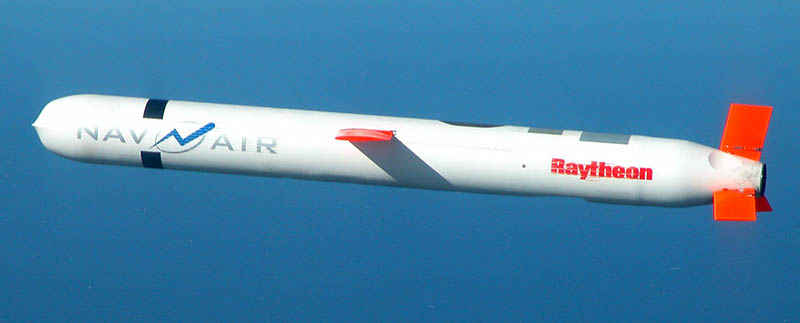Title image is the US Air Force’s autonomous X-37B Orbital Test Vehicle after landing from Mission 5 at NASA’s Kennedy Space Center Shuttle Landing Facility on 27 Oct. 2019. Image credit: U.S. Air Force
Whether you are in the US, Europe, Russia, China, or anywhere else, space technology has probably contributed more to the pursuit of peace than just about any other technology. During the Cold War, a key enabler for the Strategic Arms Reduction, or START Treaty, a 1991 treaty between the USA and USSR on the reduction and limitation of strategic offensive arms, was the ability for both sides to verify that the other was keeping its word.
Treaties like these specifically protected satellites by outlawing anti-satellite technologies, and in many ways were designed to be verified from space. For this reason, the treaties would seak to limit the number of intercontinental ballistic missiles, rather than the number of warheads on each missile, as the missiles can be counted from space, but the warheads inside them can’t. In another example, under the 1991 START Treaty the USA destroyed 365 B-52s, a long-range, strategic bomber. They were chopped into five bits and left for three months in the desert of Arizona so that Russian satellites could confirm that the bombers had been destroyed.
Military space activities account for over 10% of the world’s space economy, dominated by the US military. The range of applications covers various forms of surveillance and missile defence, as well as telecommunications, and navigation.
Now, when I say military surveillance from space, you’re probably thinking spy satellites like you see in the movies. And whilst that is part of the idea, the movies can over simplify and exaggerate capabilities. Imaging satellites can be optical, taking pictures like you see in the movies, but cloud cover, or darkness can be a problem. Or, they can use radar, where they measure a reflected signal broadcast from the satellite, turning that into something like an image but one that can be generated even with cloud cover, or at night.
Stereo optical imaging, that is 3D pictures, is available and is helpful in identifying objects. We also have video images available from spacecraft in low-Earth orbit. And, multi-spectral imagery is provided by most optical systems, so, rather than taking pictures like those on your phone, taking pictures at different wavelengths and at wavelengths beyond what our eyes can see, such as infra-red to detect heat. For the military this can be helpful in detecting subtle changes, countering camouflage, and for weather forecasting.
In some countries, such as Italy, the national weather forecasting agencies are part of the military. Elsewhere, such as the UK, the weather forecasting agencies provide a service into the military. And, in countries such as the USA, the military have a weather forecast agency in addition to, and separate from, the civilian one.
Electronic surveillance, that is, locating all kinds of radio transmissions from Earth is a key form of military surveillance from space. Such spacecraft tend to be in low-Earth orbit, although there are some in geostationary orbit, and can be used to locate the source of a signal. For example, a ship in the ocean that has its location beacon turned off can be detected, perhaps by a mobile phone on-board, or even the ship's engines.
There are also satellites that are used to detect the launch of missiles. The US system uses infrared sensors to compare lightning flashes, forest fires, meteors entering the atmosphere, and other forms of bright flashes that are all eliminated to identify launches, and provide battlespace characterisation. And, there are also sensors in orbit designed to detect the explosion of a nuclear bomb.
Beyond surveillance, a number of countries have dedicated military communications satellites, and many, including the US and the UK, also make use of commercial communication services. Generally speaking, a military communications satellite has extra levels of encryption, resistance to signal jamming, and other hardening features. These dedicated services allow for assured, secure communication and tasking, but can also be used as a data relay for surveillance satellites, ensuring data is relayed to analysts as quickly as possible.
Several militaries also operate a Global Navigation Satellite System, GNSS, including the US GPS system, providing real-time, worldwide positioning information to personnel, equipment, and weapons. These systems are designed to enable the recipient of the signal to establish their position without needing to transmit and thereby reveal their position to an adversary employing electronic surveillance.

The GPS system transmits two signals, the coarse/acquisition (C/A) code is freely available to the public. A restricted precision (P) code is reserved for military users. Military authorities can, if they wish, turn off the unencrypted signals on the satellites and transmit only the military signal. This means you can’t always rely on GPS, and this was the motivation for Europe’s civilian Galileo GNSS system, which has a similar encrypted signal for European governments.
Today, space is at a crossroads as governments now openly recognise it as a war-fighting domain, similar to land, sea, air, and cyber. But again, not like in the movies with spacecraft shooting torpedoes and lasers to destroy each other, more like radio jamming and trying to confuse or blind a spacecraft’s sensors. Freedom to operate in space is increasingly limited, with space becoming more congested and contested. The Cold War treaties that restricted anti-satellite technologies to aid verification of reduction and limitation of strategic offensive weapons in order to ease the tensions of the day are expiring, and not being renewed. With this, countries are developing and deploying both ground and space-based anti-satellite technologies to disrupt operations, and limit observations from space. Creating more secrecy, distrust, and division, and the risk is a return to arms races and increased tensions due to a lack of capacity to see beyond the conspiracy stories, suspicions, and hostilities that can lead to open conflict.
Electronic & Electrical Engineering
Royal College Building
204 George St.
Glasgow G1 1XW